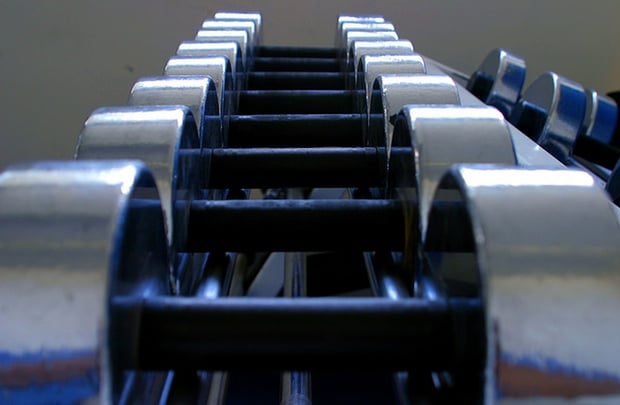Personal trainers often hear their female clients say, “Don’t make me bulky!”
But any fitness expert can tell you it takes a lot
more than lifting five-pound weights to get you body-builder-esque
muscles.
However, for those who aren’t scared to tone up and get
stronger but still can’t bench press 200 pounds, there’s hope: Lifting
less weight more times is just as effective at building muscle
as using heavy weights, according to a new study published
in the
Journal of Applied Physiology.
The key to muscle growth, researchers said, is not how heavy a weight you use. Rather it’s working until you can’t go any
longer, otherwise known as the point of fatigue or failure.
The study involved 18 young, healthy men who were assigned
to three different leg-strengthening programs for ten weeks. One
program involved performing one set of knee extensions at 80
percent maximum load. The second involved three sets at 80 percent
maximum load, and the third included three sets at 30 percent
maximum load. For heavy sets, the men lifted 8 to 12 times,
and for lower-weight sets they lifted 25 to 30 times.
At the end of the study, researchers found that the volunteers in the heavy and light groups who lifted three sets had equally
significant gains in muscle growth. The group that performed one set gained only half as much muscle.
Trainer
Lance Breger, who wasn’t involved with the
study, said the results could be due in part to the high-volume training
program. “The more
volume or total workload, the bigger muscles may become,” he
said. “Also with higher reps, a muscle will be under tension
for longer periods of time, going through more contractions,”
thus causing more muscle growth.
While the researchers noted that the three-set,
heavy-weight group ended up being a bit stronger than the light-weight
group,
the results are still promising, especially for older adults.
“Many older adults can have joint problems, which would prevent
them training with heavy loads,” lead researcher
Cam Mitchell said in a statement. “The study shows that they have the option of training with lighter and less intimidating loads and
can still receive the benefits.”
The results are sure to challenge trainers’ current
weight-lifting routines for clients: “If this study is true, trainers
are doomed!” Breger says. “We’ll have to count correctly over
12 and be bored to tears watching Jane Exerciser doing 30 bicep
curls.”
The full study is available at the
Journal of Applied Physiology website.


















